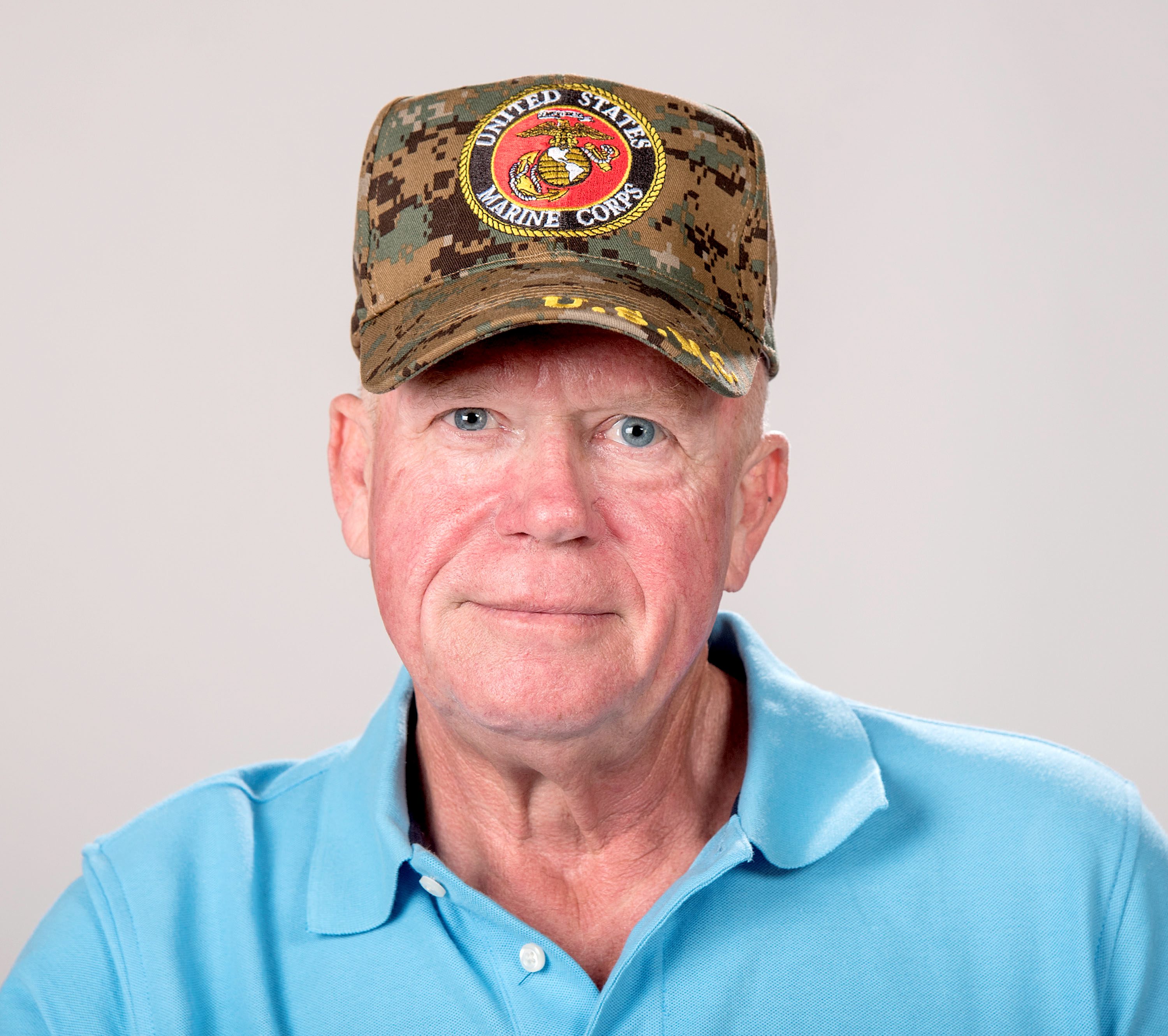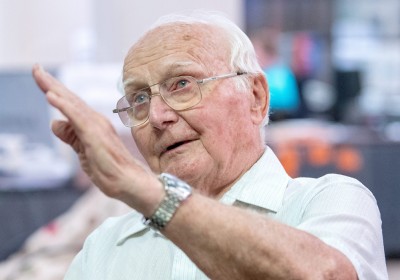Ron Deckard
By Paul Wood

Photo By Heather Coit/The News-Gazette
WHITE HEATH — In two decades in the Marines, including Okinawa and Desert Storm, Ron Deckard nearly bought it just off the coast of Massachusetts.
Deckard, now 62, was in the Marine version of a C-130 transport plane, carrying a load that included a UH-1 “Huey” helicopter.
Past the point of no return, it had to fly into headwinds of 200 mph, virtually pushing it backward, when an engine flamed out.
When the plane managed to land, Deckard checked the fuel tank: just fumes.
In a long career of maintaining aircraft and engaging in dangerous midair refuelings, Deckard admits his career was “pretty interesting.”
Growing up in Seymour, he traveled to Mahomet for high school. He competed first in football, then in wrestling.
Deckard enlisted in 1974, not long before the Vietnam War ground to a halt.
“My brother was in the Air Force during Vietnam,” but Deckard chose the Marines, with the draft recently expiring.
At the recruitment station, since demolished to make way for Christie Clinic, he proudly signed up, then went to the nearby Brass Rail for a beer.
By July, he was in Memphis, beginning technical training that included mechanical work on jet engines that continued in El Toro, Calif.
Deckard says the Marines sent him places he’d dreamed about, and the work was always different.
He maintained aircraft of every size: DC-9s, T-39 Sabreliners, Piper Aztecs and UH-1s, among others.
One of his skills was as an engineer in refueling aircraft while airborne in the Marine version of the C-130, the KC-130.
Deploying a fuel hose from one plane to another could be dangerous, Deckard says.
With a helicopter, a CH-53, that meant threading a hose beyond the rotors.
He was stationed at Glenview and at Naval Air Station Patuxent River.
At Cherry Point, N.C., many missions were search and rescue — often in rough conditions.
While in the service, he came home and married Cheryl. They have two children.
He served in Okinawa. Later, in Desert Shield and Desert Storm, his work included in-flight emergencies, at first on F-4 fighters, then on a wide variety of aircraft.
With these high-speed refuelings, the probe for the fuel line had to come in at the right speed, or it would push the receiving basket away, Deckard says.
“If the receiver aircraft hit it too fast, the reel could take up the hose,” he says.
The probe could break off. “The hose is full of fuel, so that could toast the engine on the plane,” he adds.
The 80-foot hose could also wrap around parts of the receiver aircraft.
“It was constant practice for the pilots,” Deckard says. “Usually, the new pilots didn’t do so well.”
Once, while stationed at Glenview, the refueler had to dump its supply 5,000 feet over the Great Lakes, he recalls — down to about 1,500 pounds of fuel.
When a receiver pilot saw that fuel was gone, the simple message was “bingo.”
“Then he’d punch out,” Deckard says, referring to ejecting from the cockpit.
In Desert Storm, he remembers, smoke from oil well fires blocked out the sun, and the desert temperature went down from 120 degrees to 90 degrees. “That was cold to us,” he says.
After service in Bahrain during Desert Storm, Deckard retired with his 20 years in military service.
He has managed to stay in aviation, working now at Willard Airport.
Do you know a veteran who could share a story about military service? Contact staff writer Paul Wood at pwood@news-gazette.com.
Read more stories from local veterans:
 David Steinfels
URBANA — In four years assigned to a helicopter unit, Cpl. David Steinfels experienced a lot of hard landings, fast-ropi …
David Steinfels
URBANA — In four years assigned to a helicopter unit, Cpl. David Steinfels experienced a lot of hard landings, fast-ropi …
 Matt Kreeb
GILMAN — Sgt. Matt Kreeb was eager to serve his country. The Iroquois West grad served in the prestigious and demanding …
Matt Kreeb
GILMAN — Sgt. Matt Kreeb was eager to serve his country. The Iroquois West grad served in the prestigious and demanding …
 Tom Gordon
URBANA — Tom Gordon didn’t care to join the Army, because he’d have to carry an M1 carbine. Instead, he enlisted in the …
Tom Gordon
URBANA — Tom Gordon didn’t care to join the Army, because he’d have to carry an M1 carbine. Instead, he enlisted in the …